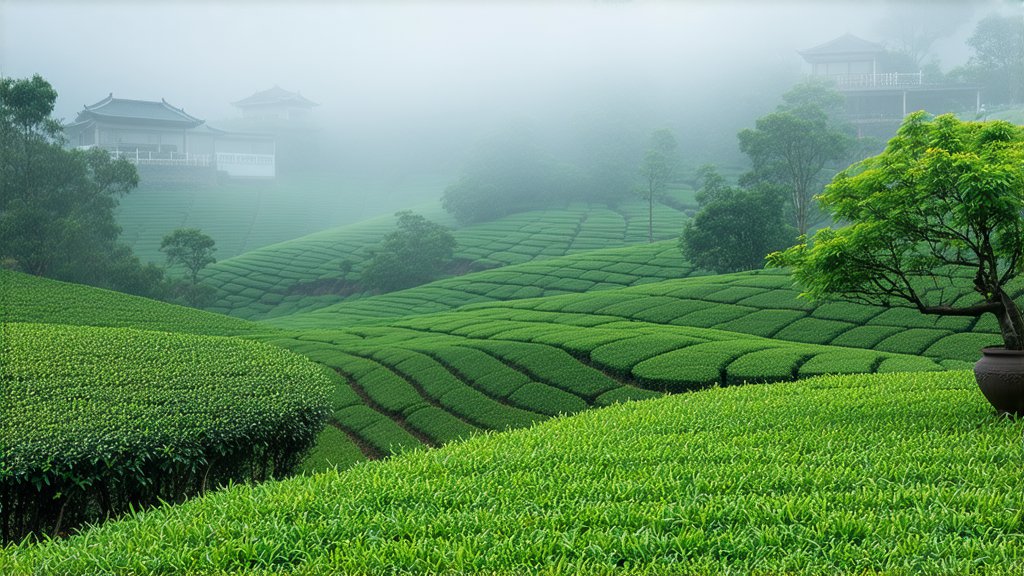
China, a land steeped in millennia of tea culture, offers a vast array of tea varieties that captivate the senses and enrich the soul. Among these treasures lies the exquisite Junshan Yinzhen, a yellow tea that embodies the essence of Chinese tea artistry. This article embarks on a journey to explore the historical roots, varieties, meticulous production process, and the intricate art of appreciating Junshan Yinzhen, inviting international readers to savor the golden elegance of this unique tea.
Historical Tapestry: The Origins of Junshan Yinzhen
Junshan Yinzhen, translating to "Junshan Silver Needle," hails from Junshan Island, located in Hunan Province, China. Its history can be traced back to the early Tang Dynasty (618-907 AD), making it one of the oldest tea varieties in China. Legend has it that the tea was discovered by a hermit who lived on the island, and its unique yellow hue and delicate flavor quickly earned it a place among the imperial court's favorite beverages. Over centuries, Junshan Yinzhen has evolved, becoming not just a drink but a symbol of refinement and cultural heritage.
A Symphony of Varieties: Exploring the Range
While Junshan Yinzhen stands out as the most renowned yellow tea from Junshan Island, the region also produces other notable varieties such as Mengding Huangya and Huoshao Huangya. Each variety boasts distinct characteristics influenced by factors like terroir, altitude, and processing techniques. However, it is Junshan Yinzhen that remains the epitome of yellow tea excellence, known for its slender, needle-like leaves and a taste profile that balances sweetness, umami, and a subtle hint of orchid fragrance.
The Alchemy of Production: Crafting Junshan Yinzhen
The creation of Junshan Yinzhen is an artisanal process that marries tradition with precision. It begins with the careful selection of tender tea buds and leaves from specific tea bushes, typically those aged between 30 to 50 years. These are handpicked during the early spring when the first flush of growth ensures optimal flavor and aroma.
Following harvesting, the leaves undergo a unique two-stage fixing process. Initially, they are lightly pan-fired to halt oxidation, preserving their natural green color. This step is crucial as it sets the stage for the subsequent yellowing phase. The fixed leaves are then spread out in a humid environment, allowing controlled enzymatic activity to slowly transform their color from green to a distinctive yellow hue. This process, known as mellowing or heap-fermentation, takes several hours and demands constant monitoring to achieve the perfect balance.
Once mellowing is complete, the leaves undergo a second fixation to fully develop their flavors before being shaped into their characteristic slender form. Finally, the tea is dried gently to lock in its aroma and flavor profile. The entire process is a testament to the skill and patience of the tea masters who have honed this craft over generations.
The Art of Appreciation: Savoring Junshan Yinzhen
To truly appreciate Junshan Yinzhen is to engage in an art form that transcends mere consumption. The preparation begins with selecting a Gaiwan (a traditional Chinese teapot) or a glass vessel to showcase the tea's visual beauty. Water, ideally at a temperature of around 80-85°C (176-185°F), is poured over the tea leaves, allowing them to unfurl gracefully like underwater dancers.
As the leaves infuse, a transformation occurs – the liquor turns a pale golden hue, reminiscent of sunlight filtering through ancient bamboo forests. The aroma released is a complex bouquet of orchid, honey, mingled with subtle notes of wood and melon. Sipping the tea reveals a symphony of flavors: an initial sweetness that gives way to a creamy texture, followed by a lingering umami finish that leaves a cleansing aftertaste.
Observing the leaves after brewing offers another layer of appreciation. The slender needles, now softened and expanded, reveal their full elegance, each leaf telling a story of its journey from bud to cup. This ritualistic experience encourages mindfulness and a deep connection with nature, embodying the philosophy of harmony inherent in Chinese tea culture.
Conclusion: Embracing the Golden Elegance
Junshan Yinzhen is more than just a tea; it is a gateway into understanding the depth and richness of Chinese tea culture. Its history whispers tales of ancient times, its production showcases human ingenuity harmoniously intertwined with nature, and its tasting is an invitation to slow down and savor life's simple pleasures. For international enthusiasts seeking to expand their tea horizons, Junshan Yinzhen offers not only a unique sensory experience but also a profound cultural exchange. As you raise your cup, may you find in every sip a taste of history, a glimpse of nature's artistry, and a moment of tranquil reflection.